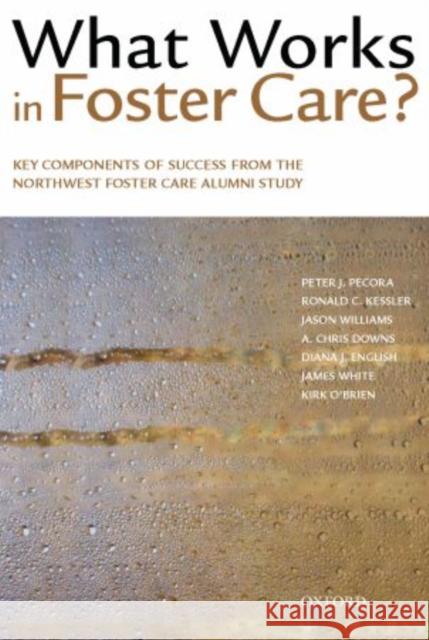What Works in Foster Care?: Key Components of Success from the Northwest Foster Care Alumni Study » książka
What Works in Foster Care?: Key Components of Success from the Northwest Foster Care Alumni Study
ISBN-13: 9780195175912 / Angielski / Twarda / 2009 / 320 str.
What Works in Foster Care?: Key Components of Success from the Northwest Foster Care Alumni Study
ISBN-13: 9780195175912 / Angielski / Twarda / 2009 / 320 str.
(netto: 341,66 VAT: 5%)
Najniższa cena z 30 dni: 355,95 zł
ok. 22 dni roboczych.
Darmowa dostawa!
On any given day, nearly half a million children are served by foster care services in the U.S. at an annual cost of over $25 billion. Growing demand and shrinking funds have so greatly stressed the child welfare system that calls for orphanages have re-entered the public debate for the first time in nearly half a century. New ideas are desperately needed to transform a system in crisis, guarantee better outcomes for children in foster care, and reduce the need for out-of-home care in the first place.
Yet little is known about what works in foster care. Very few studies have examined how alumni have fared as adults or tracked long-term health effects, and even fewer have directly compared different foster care services. In one of the most comprehensive studies of adults formerly in foster care ever conducted, the Northwest Foster Care Alumni Study found that quality foster care services for children pay big dividends when they grow into adults. Key investments in highly trained staff, low caseloads, and robust supplementary services can dramatically reduce the rates of mental disorders and substance abuse later in life and increase the likelihood of completing education beyond high school and remaining employed. The results of this unparalleled study document not only the more favorable outcomes for youth who receive better services but the overall return when an investment is made in high quality foster care: every dollar invested in a child generates $1.50 in benefits to society. These findings form the core of this book's blueprint for reform.
By keeping more children with their families and investing additional funds in enhanced foster care services, child welfare agencies have the opportunity to greatly improve the health, well being, and economic prospects for foster care alumni. What Works in Foster Care? presents a model foster care program that promises to revolutionize the way policymakers, administrators, case workers, and researchers think about protecting our most vulnerable youth.











